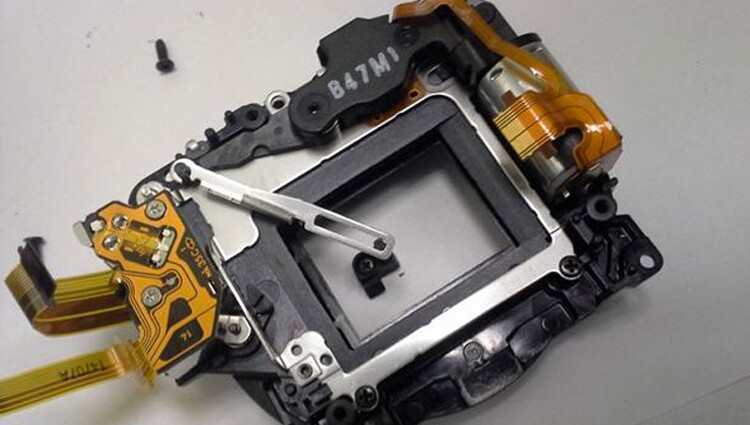Particle Physics On The Cheap

Particle Physics On The Cheap lead image
Students built a particle physics detector by disassembling and modifying a digital camera. | Credit: K. Pritchard et al., Missouri Southern State University
(Inside Science Currents Blog) -- Thinking of particle physics experiments may inspire images of huge, multibillion-dollar facilities, such as Europe’s Large Hadron Collider
The device can detect exotic subatomic particles known as muons, which exist in our midst. Muons are the heavy cousins of electrons, over 200 times greater in mass. When cosmic rays from space smash into molecules in the atmosphere, they create a spray of particles including muons, which can careen towards the ground near the speed of light. If you hold out your hand, about one muon would pass through it per second. Yet, these particles are very hard to detect.
Enter the new detector, designed by undergraduates Kristina Pritchard, Shemaiah Khopang, and Chase Garrett, and their adviser, David W. McKee, at Missouri Southern State University in Joplin.
For such an inexpensive device, it has a fancy name, the Ring-imaging Cherenkov detector, with an ironic acronym, RICH.
“We wanted to build the RICH detector for less-than-rich universities,” Pritchard explained
“It is just a modified camera,” said McKee, her adviser, specifically a Sony A3000 digital camera, which made up most of the project’s cost of a little over $500. The team chose the camera because it has a large image sensor, based on a relatively inexpensive technology known as CMOS, which is very sensitive to light for its cost.
The team replaced the glass lens in the camera with a chunk of material known as magnesium fluoride.
When a muon strikes the device, it creates a visible ring of light known as Cherenkov radiation. This ring can provide information on the muon’s energy and the direction from which it came.
The magnesium fluoride is the key ingredient that converts the incoming muon into the visible ring. To understand why this happens, you need to take into account some interesting physics.
First, nothing can travel faster than the speed of light in empty space; this speed limit is about 186,000 miles per second. But light slows down whenever it travels through any substance. And particles, such as muons, can actually outrun light through a material, such as magnesium fluoride.
Whenever a charged particle in a material travels faster than the speed of light in that material, it produces Cherenkov radiation — a cone of light. In their 2-D camera image, the team saw a ring of light that they believe was produced by an individual muon passing through the camera.
The most difficult part of the project, Pritchard said, was finding the right material to replace the glass in the camera.
Whenever light travels from one medium -- such as air -- into another medium -- such as glass -- it changes speed. How much the speed changes affects how much it refracts, or bends its path. Other materials could also slow down light to the point at which muons would travel faster than it, but in some cases, the emitted cone of light would not escape the substance. This is known as total internal reflection and would be a problem because the camera’s detectors wouldn’t be able to record an image.
But magnesium fluoride slows down light by just the right amount -- and as a result, has the right index of refraction--which causes the emitted light to emerge at a good angle towards the camera detector.
As it happened, the detector broke shortly after making their first successful image, as a result of an electrical connection breaking. The team plans to rebuild the device with a new connector.
But their design stands as a successful proof of concept for a cheap particle detector. With a rebuilt device, the team plans to make additional measurements and compare them to those made in much more expensive devices at national labs and other facilities.
[Update 4/14/15, 9:50 am EDT: Since posting this article, I was reminded of other low-cost particle detectors, including the DECO smartphone app


